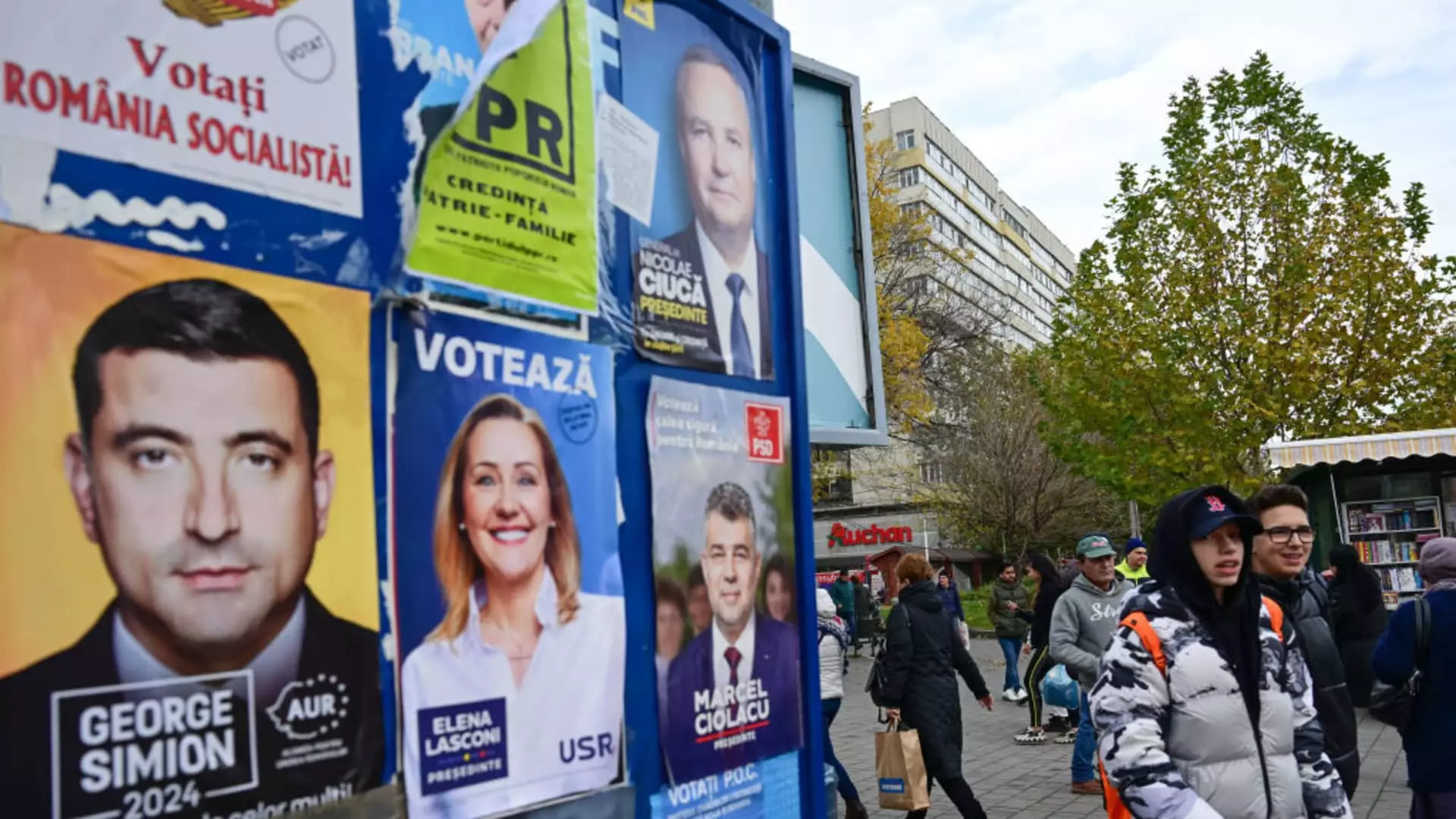Romania’s recent presidential election has confounded political analysts with outcomes that defy pre-election predictions. Calin Georgescu, an independent candidate supported by far-right factions and pro-Russia sentiments, emerged as a frontrunner, capturing 22.94% of the vote in the first round. His unexpected performance has sent ripples through the Romanian political landscape and raised questions about the direction in which the country may be headed. Georgescu’s rise can be attributed to his strong online presence, particularly on platforms like TikTok, which he effectively utilized to connect with younger voters disillusioned with traditional political rhetoric.
With no candidate securing the requisite 50% of the vote for a decisive victory, the stage is now set for a runoff election on December 8. Georgescu will face off against Elena Lasconi, the pro-NATO candidate and leader of the Union Save Romania (USR) party, who garnered 19.17% of the votes. Lasconi, the mayor of Campulung, has distinguished herself as a champion of European integration, advocating for military support to Ukraine while also championing anti-corruption and administrative reforms. This stark ideological contrast between Georgescu’s ultranationalism and Lasconi’s pro-EU stance introduces a compelling dynamic to the upcoming election, as voters will have to weigh national pride against a vision of European alignment.
The Social Democratic Party (PSD), historically a dominant force in Romanian politics, finds itself in a precarious position following this election. Party leader Marcel Ciolacu narrowly missed the runoff following a disappointing 19.16% of the vote. This marks a significant shift, as for the first time since the fall of communism, the PSD will not have a candidate competing for the presidency. Such outcomes could signal a deepening voter sentiment towards alternative political movements, as seen in the rise of Georgescu and other right-wing candidates, including George Simion of the Alliance for Uniting Romanians (AUR), who received 13.87% of the votes.
A Changing Voter Landscape
The first round also highlighted the challenges faced by traditional political parties in Romania. Nicolae Ciuca, a member of the National Liberal Party (PNL) and former prime minister, finished fifth with only 8.79% of the votes, underscoring the waning influence of mainstream political establishments. The elections saw a voter turnout of 52.55%, indicative of increased engagement among the electorate, particularly amongst younger voters, spurred by social media campaigns and urgent socio-political issues.
As Romania braces for the second round of presidential voting, the implications of this election extend beyond mere political preference; they reflect shifts in societal values and priorities. Voters are increasingly drawn to candidates who resonate with their immediate concerns and visions for the future. Whether Georgescu’s ultranationalist appeal or Lasconi’s EU-compliant reforms will prevail remains to be seen, but one thing is clear: Romania is poised for a transformative period in its political history. The choices made in the upcoming runoff could shape the nation’s trajectory amidst turbulent geopolitical currents and internal calls for reform.



Leave a Reply